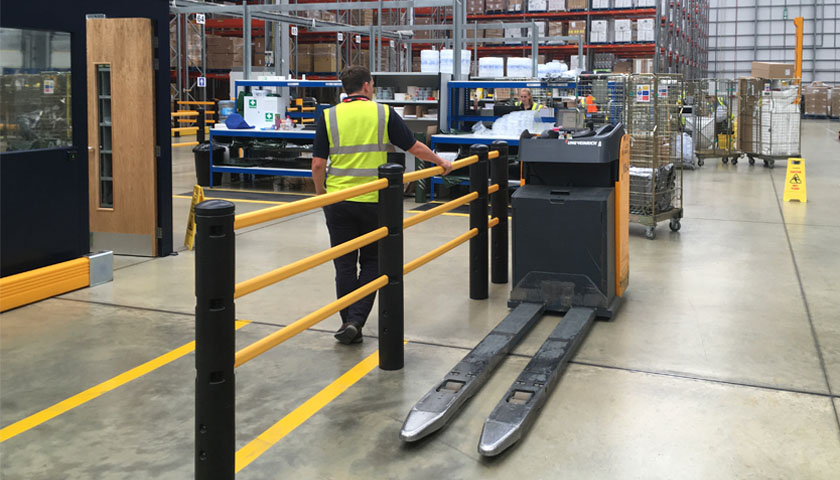That old and rusting steel barrier you might see in some dark warehouse on an even darker industrial estate – what impression does it give?
Care or neglect? Brightness or dullness? Safety or danger?
Likely it gives a negative impression, yet it was probably installed with good intentions, by a conscientious manager trying to implement some sort of health and safety practice.
But steel doesn’t age well. It corrodes, it dents, it scratches, the paint flakes, it’s hard to clean. What was once a gleaming guardrail is now a faded obstacle, its rough edges themselves a potential injury hazard.
Around its footings the concrete is chipped and the barrier itself wobbles – the result of too many bumps and grazes from FLTs and hand pallets on an inflexible material.
Now, it’s less an example of a warehouse manager doing the right thing, but more an embarrassing relic from a ‘When Health and Safety Goes Wrong’ video.
So what does a new Facility Manager do? Certainly, if the impression the barrier gives is negative, if it’s an injury hazard, if it isn’t fit for purpose anymore, then it needs replacing.
Plastic barriers are resistant to scratches, do not corrode, do not require repainting, have a wipe-clean surface and do not chip, meaning maintenance costs are slashed to near zero.
Even better, their flexible nature is their inherent strength. It ensures impacts are absorbed and the barriers reform, looking as good as new and protecting those costly floors in the process.
The important demands of health and safety put pressure on maintenance costs and preventing staff injury and facility downtime is every warehouse manager’s priority. So why not kill two birds with one stone?
Flexible, plastic barriers from McCue are a working solution used the world over. The days of the rusting steel guardrail are numbered.


